Weather conditions and climate are essential for tourism. Climate is a key factor determining the attractiveness of a destination, which also influences the period for holidays and the choice and cost of tourism activities. Weather conditions contribute to travel satisfaction in the destination during holidays. Adverse weather events, including heat and cold waves, intense rainfall, storms, or changes in natural tourist attractions such as lack of snow, can have a negative impact on a tourist's experience in a destination and on a tourist's desire to return.
Due to its spatially concentrated, weather-dependent and highly seasonal nature, tourism in Bulgaria is vulnerable to climate change. Extreme events observed in the past are expected to become more frequent under climate change scenarios, including heat waves, intense rainfall, coastal flooding and storms. Winter tourism already suffers from higher temperatures and in the short to medium term ski areas are likely to become increasingly uneconomic; in the longer term summer temperatures are expected to exceed biophysically acceptable threshold levels, while sea level rise and flooding will lead to the loss of coastal areas. Climate change may also indirectly affect tourism, in particular by increasing resource scarcity (fresh water) and increasing demand for energy, e.g. for air conditioning.
Thus, climate change poses different short- and long-term threats to tourism in Bulgaria, although warmer temperatures earlier and later in the year may make the country more attractive in the off-peak season (between the high and low seasons).
The main risks related to expected climate change and extreme weather events facing the Bulgarian tourism sector can be summarized as follows:
- Fewer tourists: a combination of trends related to climate change, including warmer temperatures, more frequent heat waves and increased rainfall and humidity, could lead to a decrease in tourists.
- Shorter winter season: It can be expected that the winter season will continue to shrink due to the shorter period of snow cover as well as other factors such as higher avalanche risks.
- Shorter mean residence time: this may be due to a combination of factors including warmer temperatures, more frequent heat waves, and increased precipitation and humidity.
- Tourist health problems: this applies especially to the summer season when there is more risk of heat and sun strokes, high blood pressure problems, etc.
- Poorer outdoor recreation conditions: this is associated with heavier rainfall and humidity, as well as extreme weather events.
- Damage to tourism infrastructure and superstructure: this is mostly due to extreme weather events, including increased winds and storms, floods, avalanches and landslides.
- Poor access to tourist destinations: this is mainly due to extreme weather events, including floods, avalanches and landslides.
- Water scarcity: tourism is associated with high water consumption, which will further exacerbate the problem in water scarce areas. Higher temperatures and the frequency of droughts will contribute to increased water demands in tourist areas and may affect and deter visitors.
The options can be summarised as follows:
- Longer summer and off-peak seasons: in particular, due to higher temperatures, there may be a longer summer season for marine tourism and off-peak seasons for all types of tourism.
- Development of new tourism products: these include different types of cultural tourism (historical, archaeological, special tourism); wine and culinary tourism; and special events (e.g. festivals).
- Attracting new prospective tourist markets: this could include, for example, developing the market segment of seniors and retirees who visit outside peak tourist seasons and developing new destinations.
- Less need for heating energy in winter and early seasons: this is related to higher temperature trends, but must be balanced with the need for more energy for cooling systems in summer.

